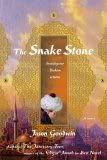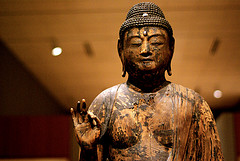The Snake Stone by Jason Goodwin, Farrar, Straus and Giroux; First Edition edition, 304 pages

“Istanbul of 1830s was a city in which everyone, from sultan to beggar, belonged somewhere—to a guild, a district, a family, a church or a mosque”, writes Jason Goodwin in his second historical murder mystery: The Snake Stone. Sultan Mahmud II is on his death bed in the seventy-three bedroom palace satisfied over his accomplishments which included destroying the Janissaries, modernizing the army and creating a new identity for the citizens by a common dress code with the fez and the stambouline. The Greeks had declared independence from Turkey in 1832, but now in 1839, Greeks were being attacked in Istanbul.
When he came to know that grocer George was beaten up and book seller Goulandris was murdered, Yashim thought they were unrelated events. Yashim the eunuch was affiliated to the palace, but unlike other eunuchs, who worked in the palace as chaperons, messengers, protectors, and mediators, Yashim had his freedom. He could deflect attention, blend into the crowd and be invisible and this talent helped him successfully solve the murders of soldiers in the previous novel: The Janissary Tree. But when Maximilian Lefèvre, the shady French archaeologist who had arrived in Istanbul looking for Byzantine treasures, was found with his sternum split open, Yashim becomes a suspect since Lefèvre had spent the his last moments in Yashim’s apartment.
Yashim has to use his rapier skills — the ability to get information from people and navigate effortlessly through the palace as well as the markets — to unravel the mystery and save himself. A word from the Sultan; that was all that was required to save Yashim from the cloud of suspicion, but a dying Sultan who no longer lived in the Topkapi palace could not do it. The suggestion that Yashim could be connected to Lefèvres’ death could find a life in the palace where not everyone was Yashim’s friend. Even if it was proven that Yashim was not involved, suspicion was enough. Also Yashim had to hurry before others got killed.
As Yashim follows leads, investigating the mysterious Greek group Hetira, he encounters a kaleidoscope of nationalities living in Istanbul. There is his friend Stanislaw Palewski, the Polish ambassador to Sublime Porte; an ambassador of a county which was consumed by its neighbors and Dr. Millingen, the Sultan’s English doctor, who was with Lord Byron when he died fighting for the Greek War of Independence in Messolonghi. As Yashim finds out Lefèvre was looking for Greek treasures based on a Latin book written by Pierre Gyllius, a Frenchman who came to Turkey in 1550, the Jewish money lender Baradossa and the member of the waterman’s guild Enver Xani too get killed.
The history of Istanbul, from the days of Justinian to the time it was overrun by Ottomans, is mixed into the narrative as Yashim finds intricate connections between various nationalities; the history lessons are so delightfully blended that it never appears artificial. The Sultan’s French mother observes dryly that while the Turks wanted to be Europeans, she found the less formal Oriental life more interesting. The reader, through Yashim, discovers the complex relationship between various communities, but also various secrets that are ensconced under ancient monuments and with guilds; secrets for which people can be murdered.
When Goodwin wanted to write a work of fiction on Istanbul, after having written non-fiction books about it, it was his book editor who suggested a murder mystery. To make it engrossing, he chose the style of Dan Brown, writing short chapters interspersed with a few long ones. He also learned enough from Dan Brown not to end each chapter with a cliff hanger. Though a murder mystery, it never rushes forward madly, but even in the midst of deep intrigue, pauses a bit.
Goodwin’s tale is well crafted; like the beads in the hands of one of his characters, the shrewd housewife Mrs. Mavrogordato, he slowly and delicately takes the story forward. The resulting piece is neither an exhaustive longueur like I, Claudius nor artificial like Wilbur Smith’s Egyptian novels, but is a great Turkish dish, like the one which Yashim cooks often. Each character, like the ingredients in the dish has a part and only a careful reading, and sometimes re-reading, will make certain connections obvious. He stays away from the usual historical clichés of large battles, tales of kings and plotting viziers; his narration is along the lines of a Holmesian story, with focus on characters with vested interests. This very readable book recreates 19th century Istanbul splendidly and and the detailed observations of daily life helps in transporting us there.
Technorati Tags: Jason Goodwin, Snake Stone, Istanbul, Book Review



